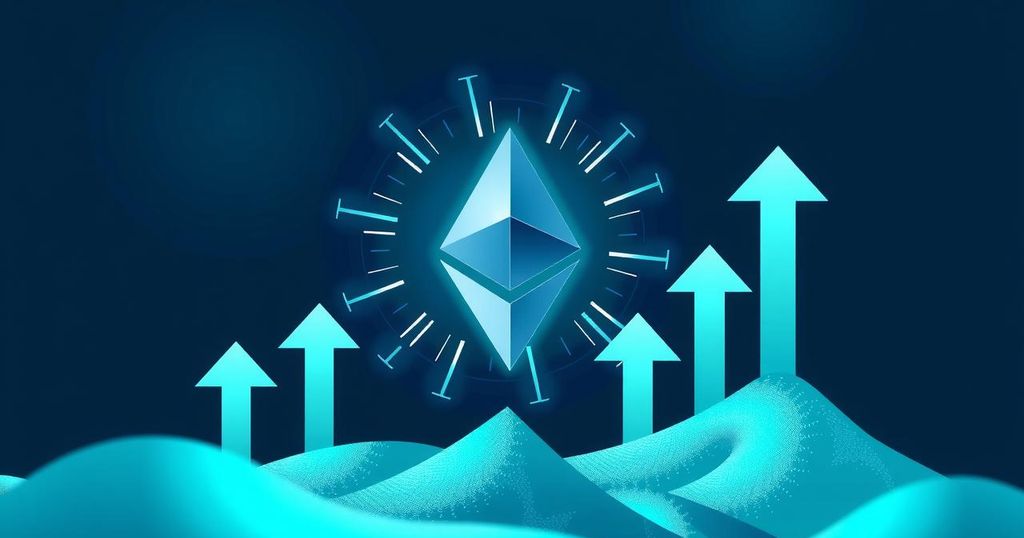Ethereum Price Forecast: Increased Buying Pressure Ahead of Pectra Upgrade
Ethereum’s price stands at $1,960, buoyed by strong buying pressure ahead of the Pectra upgrade. Supply on exchanges has reduced to a decade low, with significant accumulation noted. Pectra could enhance functionality with key updates. The price strategy reveals critical support levels near $1,800 and potential resistance at $2,070, as bearish signals emerge in the market indicators.
Ethereum (ETH) currently trades at $1,960, showing significant buying pressure as the Pectra upgrade approaches. Reports from Santiment highlight that the supply of ETH on exchanges has hit a decade low of 8.71 million, resulting in 16.4% less ETH on exchanges than just seven weeks ago. This trend suggests that investors are likely moving their holdings into private wallets for long-term retention.
In addition, Ethereum accumulation addresses have recorded an impressive growth of 4.77 million ETH since the start of the year, reflecting a 32% increase. Notably, March alone accounted for 2.11 million ETH added as prices dropped below the $2,000 mark. Accumulation addresses are defined as wallets that do not exhibit any outflows, signalling a trend towards holding rather than trading.
The open interest on ETH futures has recently climbed from 9.40 million to 10.10 million ETH within three days, indicating increased confidence among derivative traders. With strong buying pressure at current price levels, ETH could establish crucial support that may trigger a price rally, potentially powered by the upcoming Pectra upgrade.
The Pectra upgrade will enhance Ethereum’s functionality by introducing transaction batching, allowing gas fees to be paid in other ERC-20 tokens, and increasing staking limits, among others. Despite facing technical challenges during its test deployments on Holesky and Sepolia networks, developers have managed these issues effectively. The new testnet, Hoodi, is set to launch soon, with a mainnet deployment planned for 30 days later if successful.
As Ethereum tests support near a descending trendline, its price could retest resistance at $2,070 if it maintains above this trendline. However, should ETH fail this support, potential downward movements could lead to levels near $1,800 or even $1,500 if further declines occur. Pivotal indicators like the Relative Strength Index (RSI) and Stochastic Oscillator are currently below their neutral levels, suggesting bearish momentum may increase if these trend lines are breached.
Ethereum fosters a decentralised open-source blockchain environment, facilitating the creation of decentralised finance (DeFi), non-fungible tokens (NFTs), and more. Its native currency, Ether (ETH), is the second-largest cryptocurrency by market capitalisation, while utilising smart contracts for automated agreements between parties. The transition to a Proof-of-Stake (PoS) mechanism in September 2022 has significantly shaped Ethereum’s scalability and sustainability. Gas fees are the transaction costs levied on users, which can spike during times of network congestion, requiring all users to be aware of such fluctuations to prioritise their transactions effectively.




Post Comment